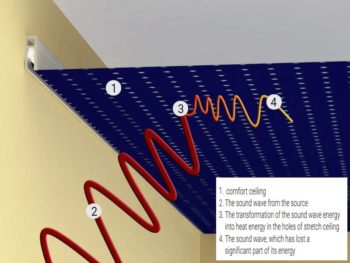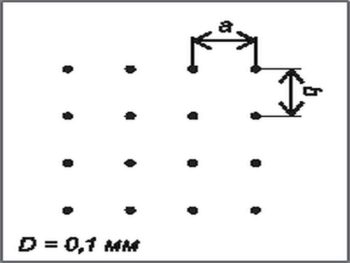Acoustic Stretch Ceilings ?
Acoustical materials


Create a good acoustic environment in any rooms implies finding a balance solution of two interrelated challenges namely the challenge of room protection from outside noise (soundproofing) and assurance of high-quality sound transmission inside that room (acoustic absorption). Adequate outside noise soundproofing can be provided both by means of using more effective sound-proofing materials by reinforcing if possible wall and or the floor thickness. However, it is not quite the same thing in case of acoustic absorption. The echo effect in a room can only be suppressed with sound-absorbing materials. Wall carpets, fitted carpets and upholstered furniture are commonly used for that purpose. More acoustically advanced premises would have special acoustic panels installed. Very often, though, the expected visual appearance of the room would clash with the acoustic requirements. One cannot but agree that wall carpets and heavy window drapes will look inappropriate in some interior designs, and not everyone likes fitted carpets. So what to do? And what to choose – good looks and functionality? There is a solution to this rivalry. Any room has a free surface never used or never exploited – its the ceiling. Therefore, if we have the possibility to make ceilings with different acoustic absorption coefficients, we shall have the opportunity to create an acoustically balanced yet visually pleasing environment. A new Batica-Renov USA line featuring micro-perforated PVC stretch ceilings offers this opportunity.
Sound waves that emanate from a sound source located in any of your room are partially absorbed by micro-perforated holes in the Batica-Renov USA stretch ceiling. The air in the micro-perforations causes the obstruction of the initial sound, partially converting the sound waves into thermal energy and reducing their intensity. In addition, there is obstruction from the air between the micro-perforated panels and the back wall. As reflected sound waves continue to reverberate around the room, acoustic absorption continues and the reverberation time in the space is reduced.
You want to learn more about it, please contact us.

